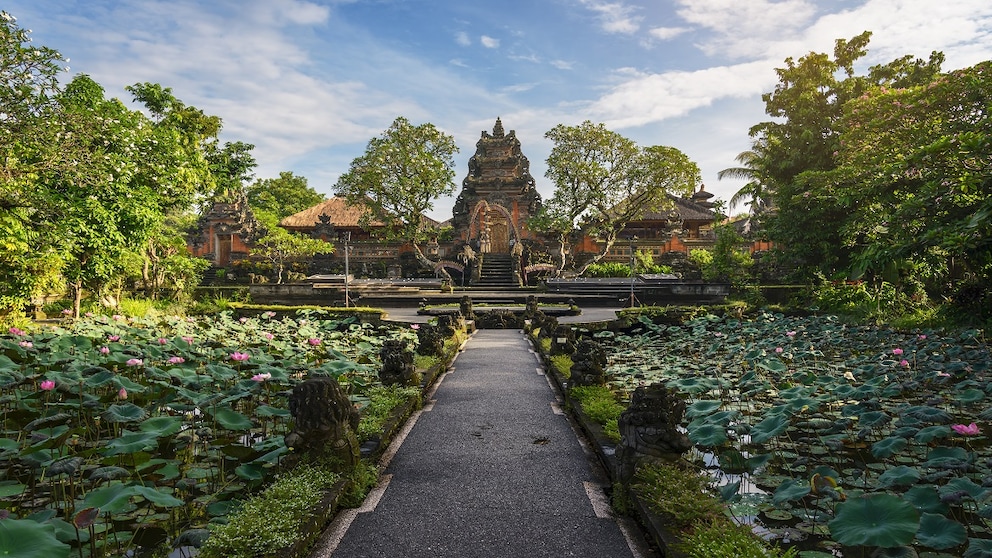March 30, 2025, 8:54 am | Read time: 10 minutes
During his visit to Ubud, the self-proclaimed spiritual capital of Bali, our author was immediately reminded of his own home city of Berlin. Loud, dirty, hopelessly overcrowded with people from all over the world looking for meaning, even in the off-season. As a result, he only endured the island metropolis for several days at a time. Relieved by escaping to the wonderful surroundings of Ubud, he ended up discovering many beautiful and even more bizarre things.
At more than forty years old, I think I can now claim to be a relatively experienced traveler. And my experiences on the road have by no means always been positive. At least, I think I have braved some pretty adverse conditions. Sleeping on the beach in Mexico, minus 30 degrees Celsius in China. Vomit-inducing “toilets” and murderous heat in Ethiopia. And yet I kept going, always wanting to see more of these places. To see for myself. But on my recent trip to Bali, there was one place that almost made me give up. And that was Ubud. For me, the place was the Berlin of Bali. And I’ve lived in Berlin my whole life, so I can say something about it.
Now, Ubud can perhaps also be credited with one thing. My personal omens for liking the city straight away, or liking it at all, were pretty unfavorable from the start. My girlfriend and I had just come from a few wonderful days in the most secluded natural surroundings. We had seen waterfalls and swam with dolphins. That’s my idea of a vacation. I now only go on city trips very rarely, especially to metropolises that are hyped online. And Ubud is undoubtedly one of these; it is referred to everywhere as the “spiritual capital” of Bali. But during our stay, there was little or, to be honest, nothing of this spirit to be felt.
Chaotic Traffic Mayhem
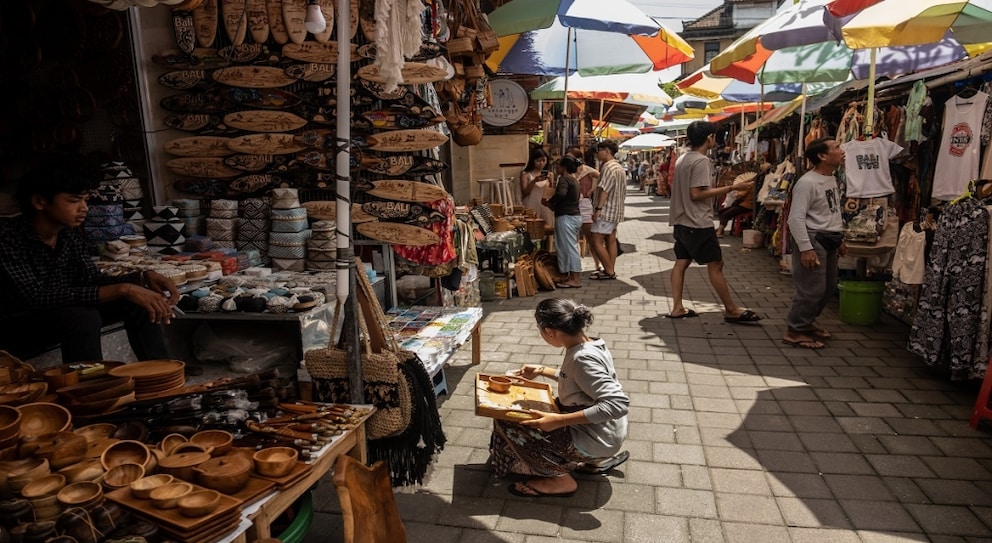
“Magical energy” and “divine place of power” – Ubud is praised in the highest terms all over the internet. Even after five nights — fortunately in a hotel far away from the city — I still couldn’t figure out why. First of all, there is the infernal traffic, which completely clogs up the larger streets and pollutes them with exhaust fumes from early morning until late at night. It’s completely incomprehensible to me. However, it was precisely these traffic arteries that seemed to be the focal points of all the chic local stores, cafés, and restaurants. Navigating the center of Ubud on foot is a downright ordeal. And sometimes not without danger due to the constant jostling on the narrow sidewalks.
It was also the only place on the island where poverty was visibly evident in the form of people begging. Sitting in the middle of the street, you really have to squeeze past them. And, of course, you have a guilty conscience because you can’t give something to everyone. The narrow, quieter side streets, where local traders run their small stalls, are a real blessing. Here, you can sometimes even fall into a holiday-like shuffling pace. But, of course, you will be inundated with offers at every turn. The speed with which sellers are prepared to reduce their original prices, sometimes drastically, is absolutely breathtaking.
“Indiana Jones” Meets Shopping Mile
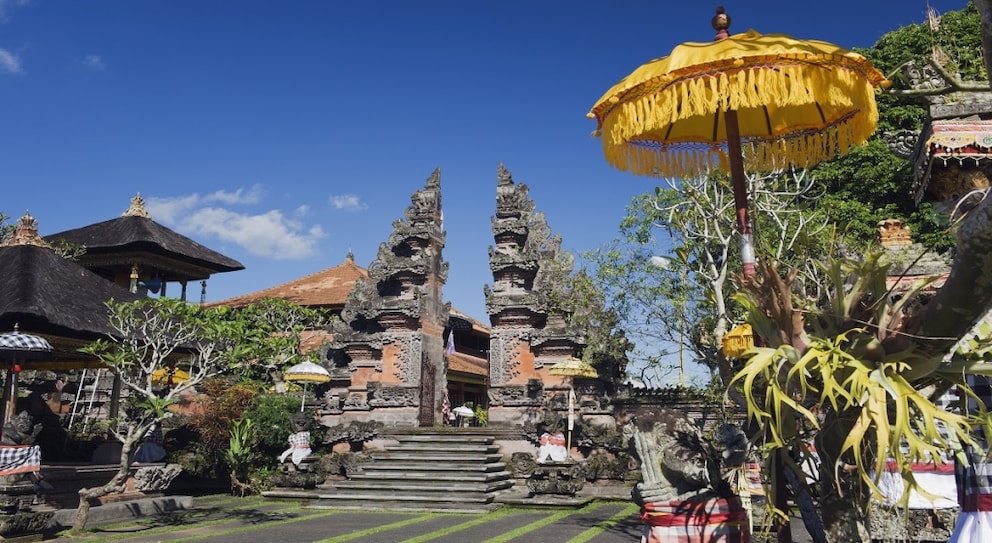
Ubud itself is certainly one of the most bizarre places I have ever seen in a not uninteresting way. At times, the metropolis looks as if a sunken cult site from an “Indiana Jones” film has collided head-on at top speed with a modern shopping mall. It is not uncommon to find hip stores in time-honored, moss-covered temples. The past has been forcibly integrated into the so-called modern age for the sake of profit. In the midst of it all, people from all over the world meander from one sacred place to another every day, and there are countless of them in and around Ubud.
But why is the town so famous and, above all, so popular with tourists? Well, according to my research, the name Ubud comes from the Balinese word “Ubad,” which translates as “medicine.” Since the 8th century, it has probably been a place where families from all over the island sent their sick to be cured. Today, people from all over the world come here with the same hope. This is evidenced by countless yoga studios and courses in trauma healing, sound therapy, palm reading, and card reading, to name but a few. The stores here are called “Dream Land,” “Above the Clouds,” or “Angel Bali.” They sell traditional Balinese medicine, incense sticks, organic cosmetics, food, and spiritual musical instruments.
Made Famous by a Movie
Massage parlors and tattoo studios are even more ubiquitous than these establishments. But how anyone can achieve relaxation or even inner peace in the midst of this complete visual and acoustic sensory overload is a complete mystery to me. In this regard, Ubud also reminded me of Berlin. At some point, people formed a certain image of “my” city. Everyone is still chasing after it today, even though it no longer exists in reality. And just like in Berlin, the big run on Ubud started a little over 20 years ago. The reason for this is a movie called “Eat, Pray, Love” with Julia Roberts, which I find absolutely narcotic.
In it, a middle-aged beauty separates from her husband. She then goes on a search for herself, which takes her to Ubud, among other places. Since first the book and then the movie became a worldwide success, the place can hardly save itself from visitors who think they are Julia Roberts. Incidentally, my girlfriend and I both fell asleep less than halfway through the movie. But, of course, there are lots of interesting things to see in the city itself. You might just have to search a little longer than elsewhere. Take the Campuhan Ridge Walk, for example. A path through the jungle above the city, several kilometers long, where you are pleasantly removed from the constant noise below. The two rivers, Sungai Wos and Sungai Cerik, flow to the left and right, but unfortunately, you can’t see anything of them due to the dense vegetation.
Palaces and Temples
A must-see in the center of Ubud is the old royal palace, the Puri Saren Agung. The complex, originally from the late 17th century, had to be partially rebuilt after an earthquake in 1917. Despite this, it now looks so ancient again due to being reclaimed by nature that you could be forgiven for thinking it was a few thousand years old. Strange: if you want, you can rent one of the houses on the site for a hefty price. Although the outside looks grand, visitors can expect very basic comfort here. This was revealed by a sneaky peek into one of the accommodations. The good café “Temu” and other stores and restaurants are also built directly into the walls of the old palace.
Another beautiful sight is the Pura Taman Saraswati temple, also known as the Water Palace. The entrance fee is 50,000 Indonesian rupiah, the equivalent of just under three euros. Every guest is given a traditional costume consisting of a wrap-around skirt and scarf/headscarf at the entrance. Out of respect, these must be worn during the entire visit. According to belief, there are sacred springs on the grounds of the water palace, which are said to have healing powers. And the ability to “connect the physical world with the spiritual.” The place is worth a short visit for its numerous imaginative sculptures and the three huge gates, which probably adorn many an Instagram channel as a photo motif. However, you won’t feel enlightened here due to the crowds of visitors.
Dancing and Eating
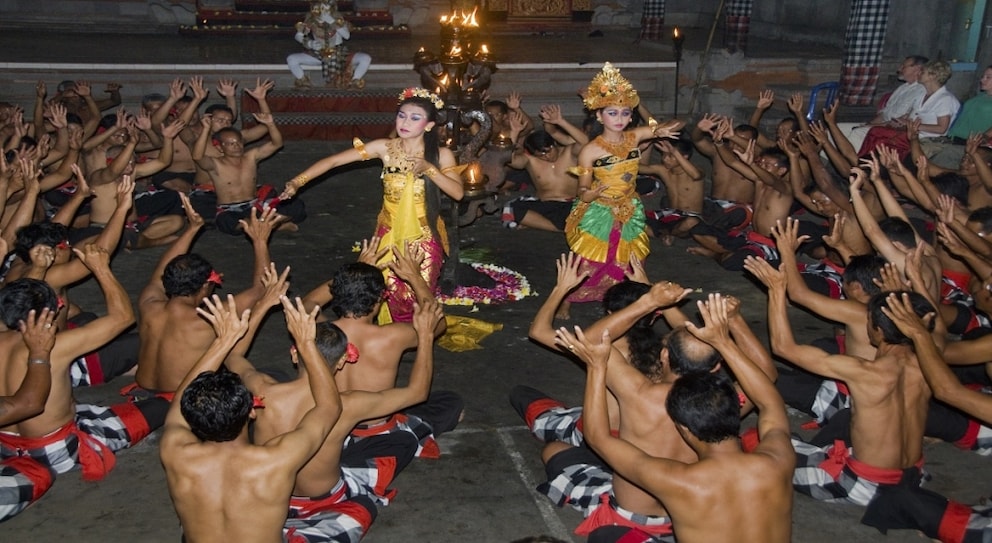
A special feature around Ubud is the various shows with traditional dances that take place almost every evening, sometimes against an impressive backdrop. They can be seen in both the Royal Palace and the Water Palace. Also, in the Pura Dalem temple, which looks impressive from the outside but which I unfortunately did not enter. We then attended a so-called kecak dance in a smaller complex outside the center. Within an hour, which flew by in a wild frenzy of color and fire, a story was told about how love ultimately outlasts everything in the end. The countless dancers wore fantastic, imaginative costumes and portrayed heroes, demons, and gods. The crowd’s favorite was the monkey god Hanuman, who reveled in the adoration, posing for selfies with enthusiastic fans for minutes on end.
On my wanderings through Ubud, which I only managed to keep up for hours at a time, I also found two very good restaurants that I would recommend without reservation. Firstly, there is the cheaper “Casa Luna”, where we ate excellent fish. A real highlight of our visit was the more upmarket “Hujan Locale,” where we even had to make a reservation in advance — the only time this has ever happened in Bali. We then enjoyed three courses seated at a window with a direct view of a temple. If you need a good, strong coffee in between the chaos of Ubud, the “Black Eye” chain is the place to go, which also offers solid cuisine at good prices.

Tanah Lot in Bali Why This Temple Is Guarded by Sea Serpents

TRAVELBOOK Author on Site Is a Visit to Bali’s Trendy Resort of Canggu Worthwhile?

TRAVELBOOK Author on Site Why a Trip to Bedugul in Bali is Only Worthwhile in the Low Season
One Berlin Is More Than Enough
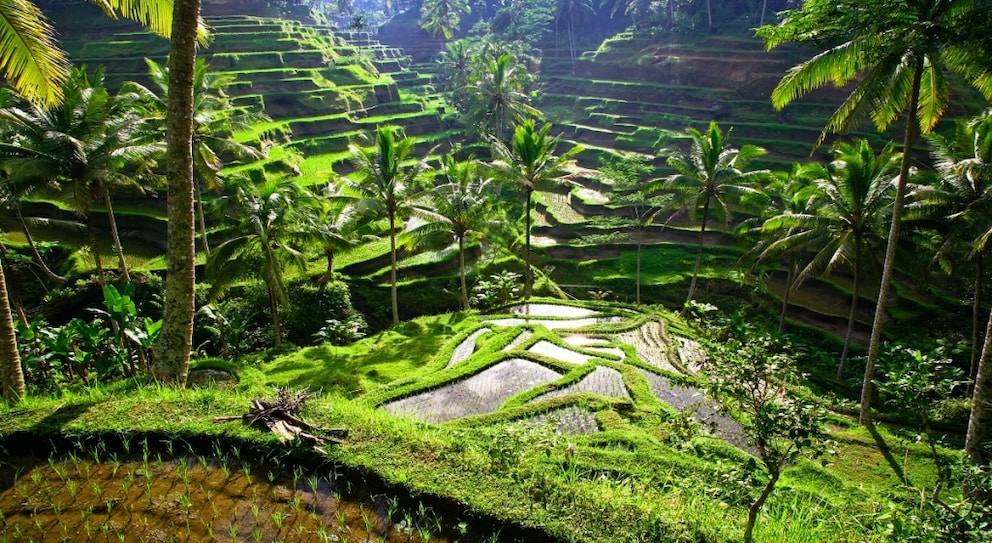
We ended up bypassing many of Ubud’s most renowned attractions during our stay, despite their prominence on the Internet. For example, the monkey forest or the water temple Tirta Empul, where you can also have a ritual wash as a tourist. However, we did visit an absolute hype spot with a vacation acquaintance, namely the rice terraces of Tegalalang. Encouraged by our previous, absolutely magically beautiful visit to the rice fields of Jatiluwih, which are a UNESCO World Heritage Site, we bravely, perhaps overconfidently, put our luck to the test. And we found ourselves in what can only be described as a surreal Balinese version of Disneyland.
The entrance fee of 50,000 Indonesian rupiah was affordable at first. However, there were various additional attractions on the grounds, such as a zipline and panoramic swings, for which a hefty surcharge was charged. You could even rent clothes to look particularly Instagrammable on one of the admittedly spectacular swings. At times, people queued for half an hour just to have their picture taken. Sometimes even by semi-professional photographers who can also be hired. However, as soon as you were away from these focal points, you could really enjoy the beautiful landscape on one of the various circular routes.
The fact that we lasted as long as we did, namely five nights, was mainly thanks to our wonderful accommodation, the “Calma Ubud” hotel run by a Spanish woman. Nestled in a beautiful garden with exotic plants and palm trees, I spent hours every morning in the pool, reading or enjoying an iced coffee while gazing at the landscape. Thanks to the relaxing massages and a comparatively inexpensive suite, I was able to recharge my batteries for the hours spent in the city. Unlike many other places that I was unfortunately only allowed to visit for far too short a time on my trip to Bali, I would probably not return to Ubud. Despite my fierce pride as a Spandauer, relishing the natural beauty of my home’s outskirts, one Berlin is quite sufficient for me.

